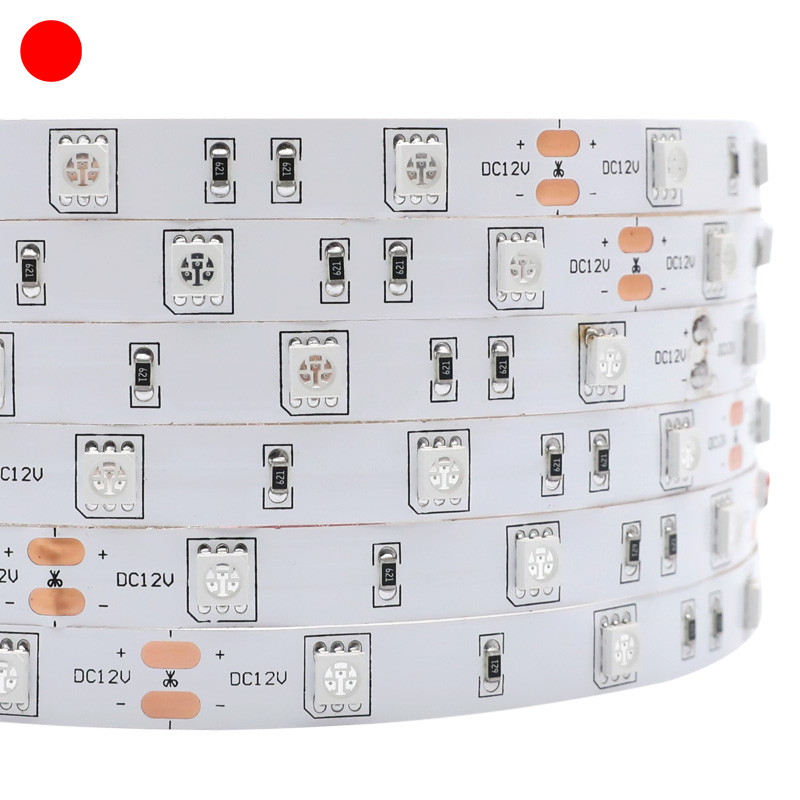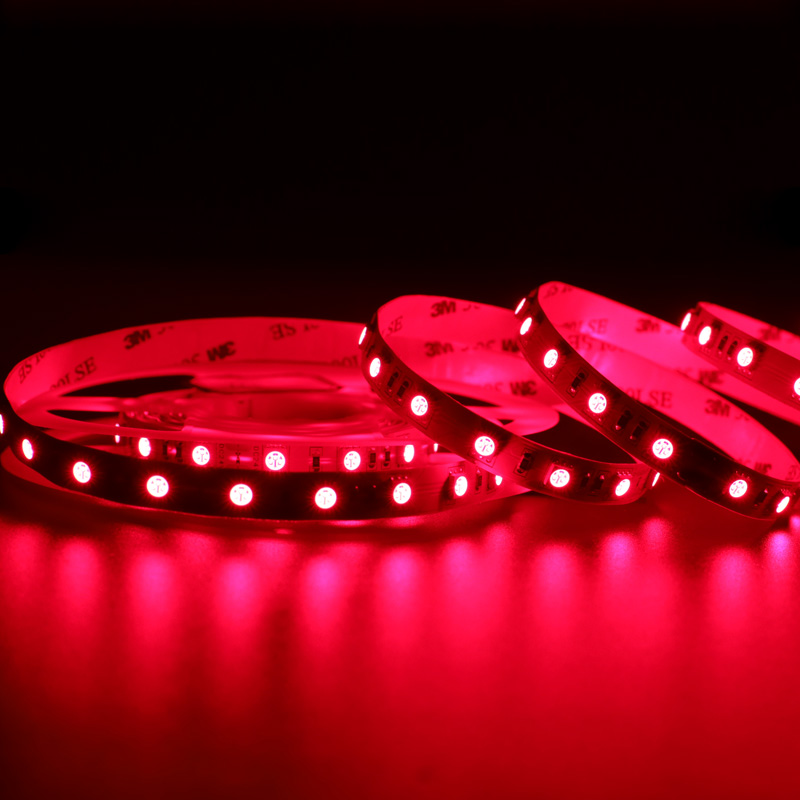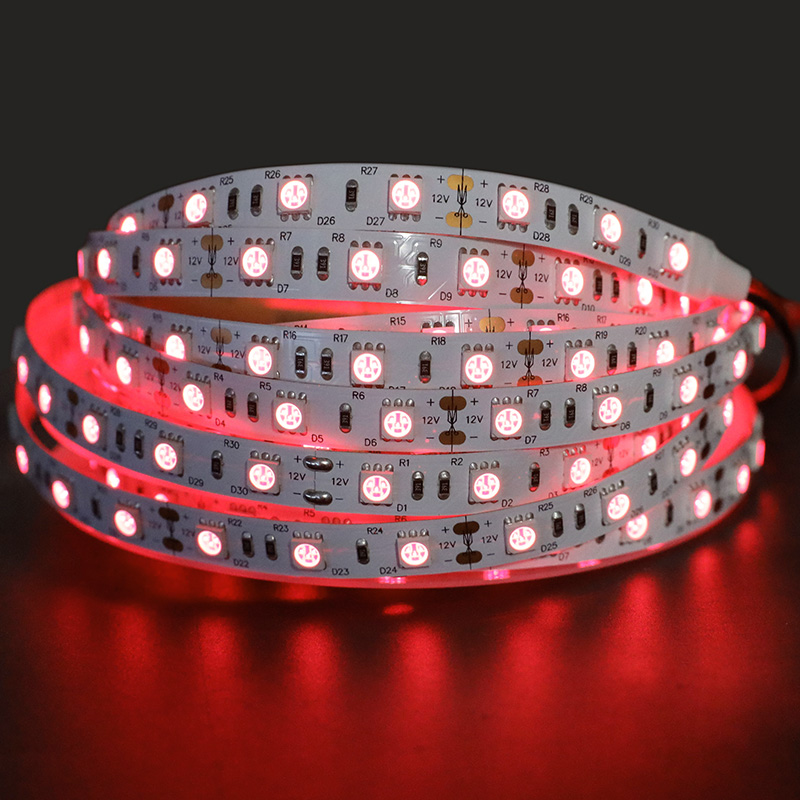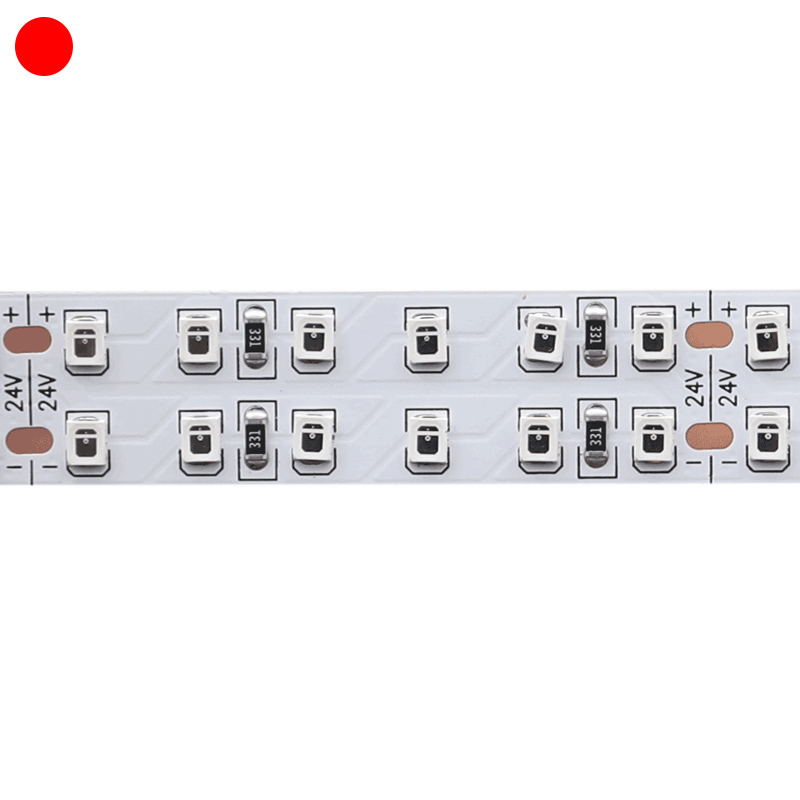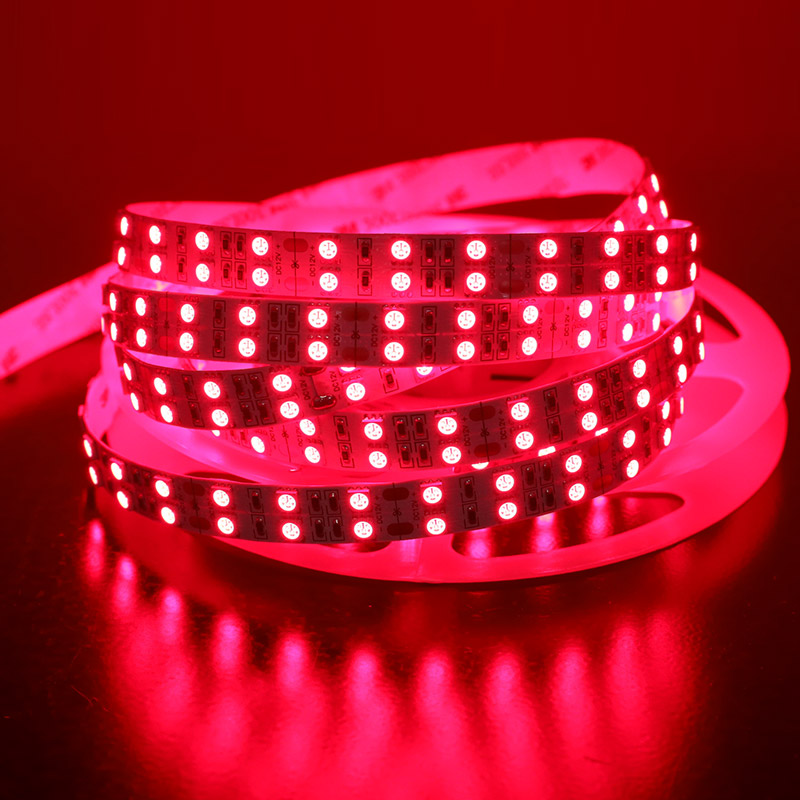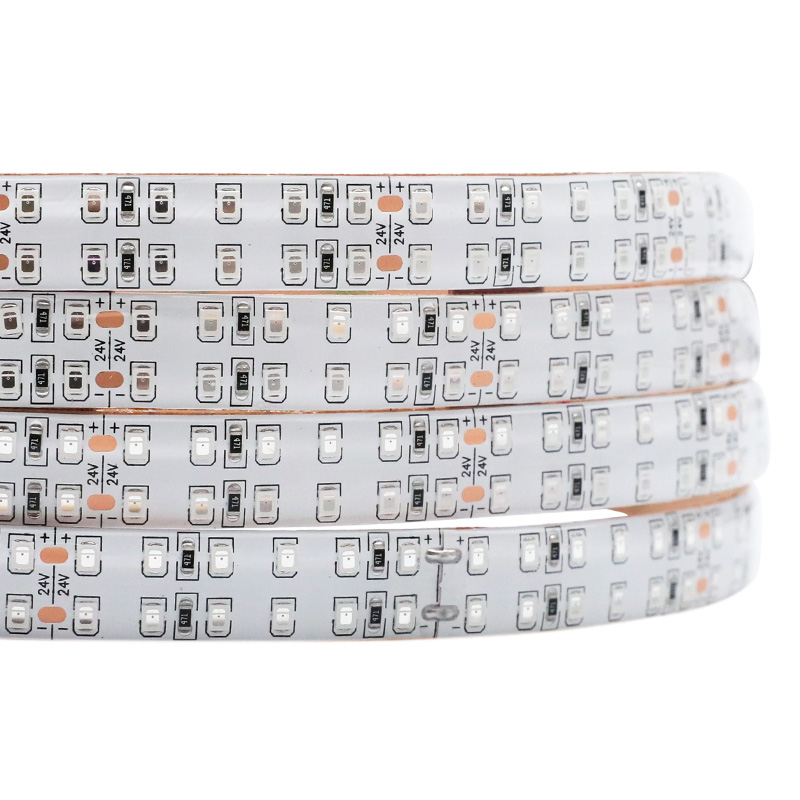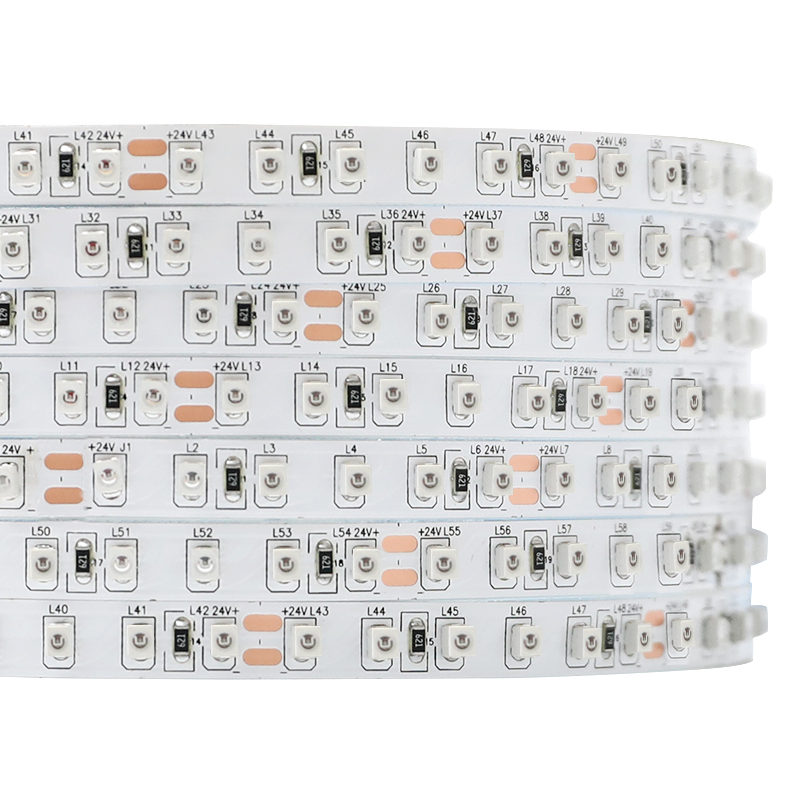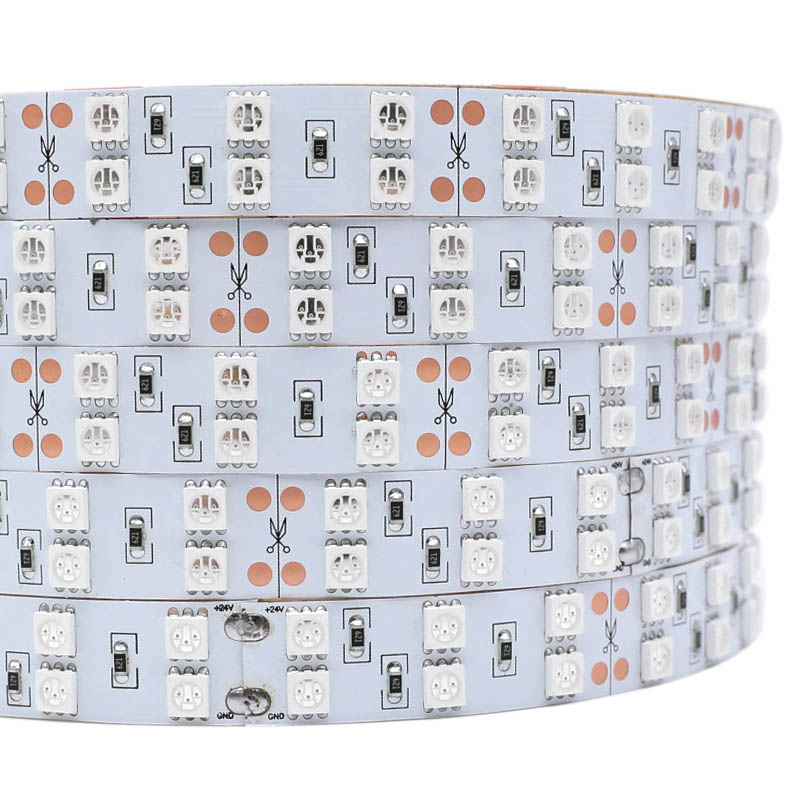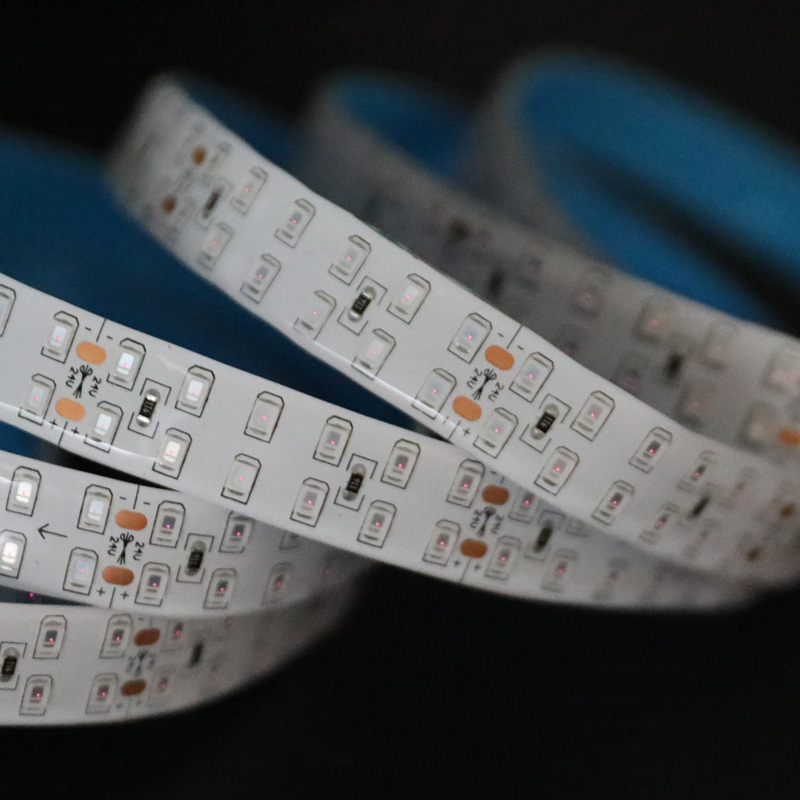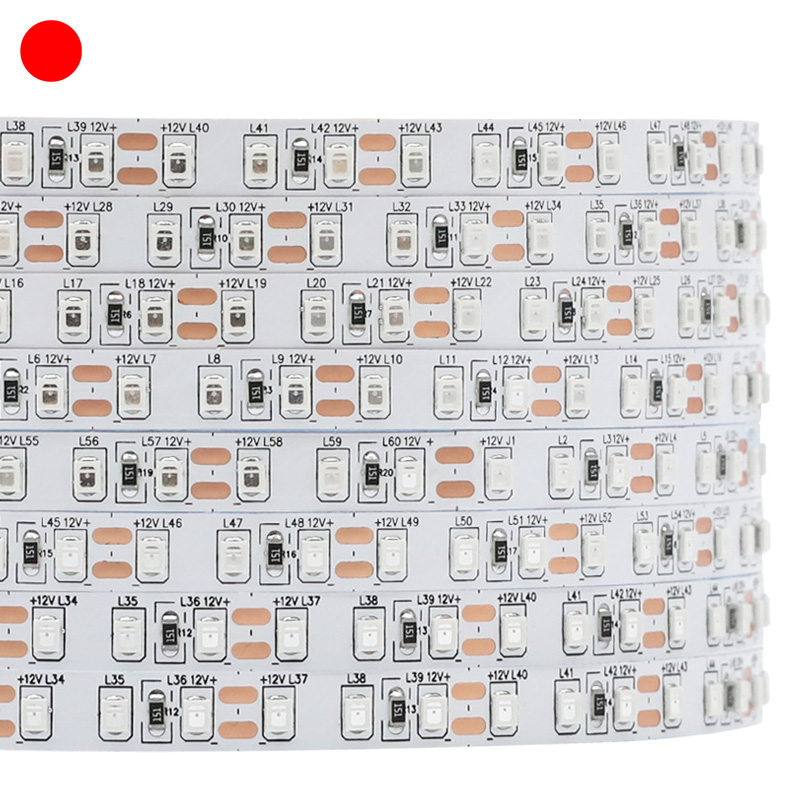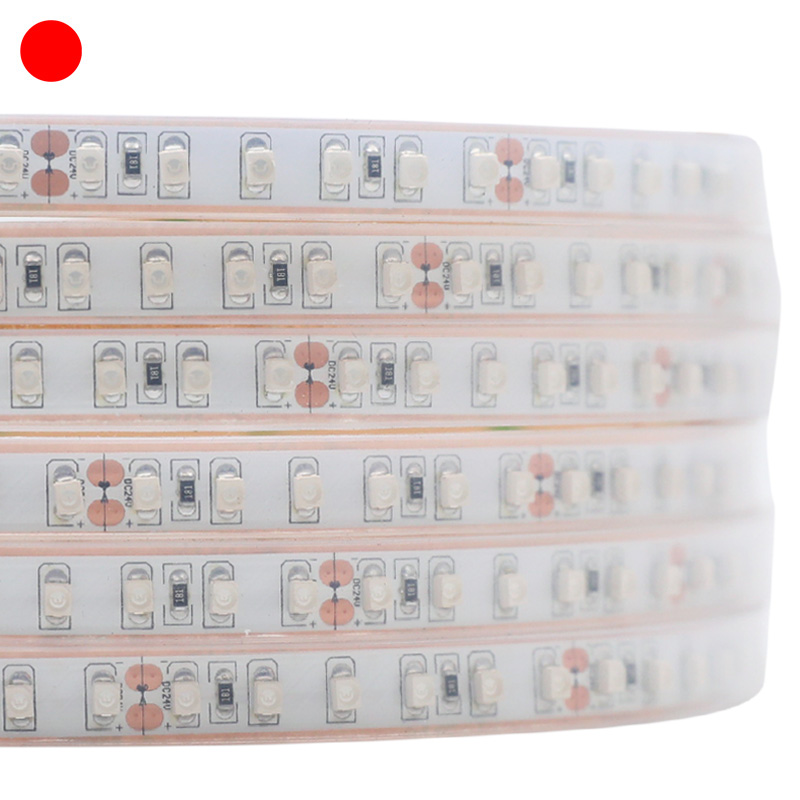InfraRed丨IR LED Strip Lights
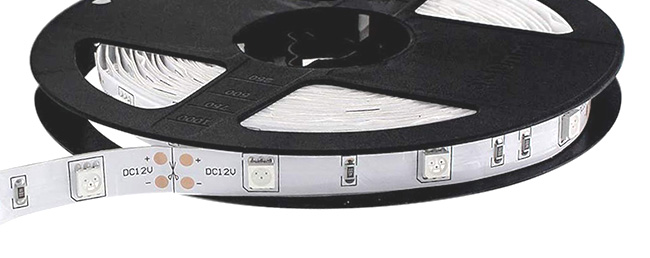

Our red and near-infrared (NIR) light led strips are available in 635nm, 660nm, 730nm, 780nm, 810nm, 850nm, 910nm, 940nm and 970nm wavelengths. These infrared (IR) LED wavelengths are often used in light therapy (photobiomodulation therapy), plant growth, and night vision systems for security cameras.
What is the difference between red and infrared led strips?
660nm deep red led strip and 730nm red light led strip are visible red light (620nm to 780nm). This red light therapy acts on the skin surface (penetrating your body to a depth of about 8 to 10 mm) to stimulate cell regeneration (collagen) and can treat skin conditions such as acne, wrinkles, and age spots, and heal wounds. In agriculture, 660nm red light led strip and 730nm far-red led strip are used in plant growth lighting systems to promote plant photosynthesis.
Near infrared light strip emits longer wavelengths (780nm to 1400nm) than red light, which allows 810nm, 850nm, and 940nm to penetrate deeper into our body to help detoxify, reduce inflammation, and relieve pain. Moreover, the light of 810nm LED strip, 850nm LED strip, and 940nm LED strip is invisible to the human eye, so this IR LED strip type is usually used for lighting that needs to be unnoticed.
Guide to Know Red Lights and Infrared Lights
Shop By Red & Infrared LED Strip Types
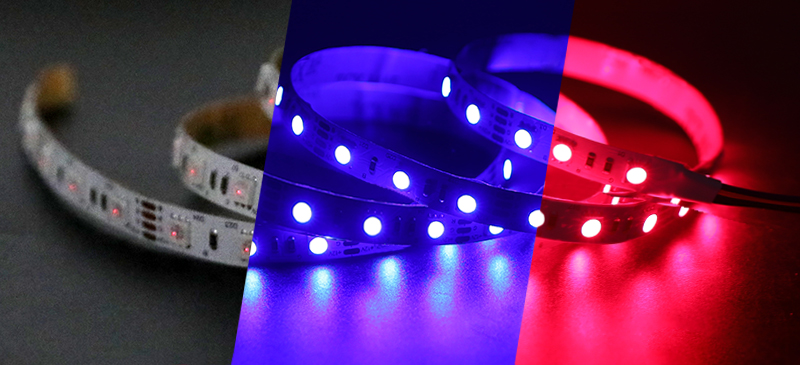 Multi Spectrum Red NIR Light Strip
Multi Spectrum Red NIR Light StripSuper Lighting LED multi-spectrum LED lights strips innovatively integrate deep red light 660nm wavelength, near infra red light 810nm / 850nm wavelengths, and blue light 450nm wavelength into a single low-voltage flexible and cuttable tape light. We utilize a 3-in-1 SMD5050 package (3 separate chips per LED) to achieve multi-wavelength synergistic light therapy, solving the limitations of single LED wavelength applications. Three different light wavelengths are encapsulated inside the same 3-core SMD 5050 diode, each core is a separate wavelength color, 450nm+660nm+810nm or 660nm+850nm+660nm red IR LED wavelength combination.
Our 3 in 1 multi-band LED light design realizes the uniform presentation of the light effect of each band. Fixed position LED light-emitting unit effectively avoids light jumping phenomenon during wave band switching. Compared with the independent multi wavelength LED source, this integrated design ensures high light intensity output while significantly improving the light density, optimizing the optical performance of the NIR red light.
The switching of LED wavelengths and mode adjustment can be realized by intelligent three-channel controller, which allows you to flexibly adjust the parameters according to your experimental or application needs, and customize the programming of the tri-band lights in the logic control like WLED.
 635nm Red LED Light Strip
635nm Red LED Light StripSuperLightingLED Red & Infrared Series 635 nm Light Strips utilize SMD2835 LED chips with a peak wavelength of 635 nanometers as the core light source. 635 nm light is a high-purity red light, with a wavelength within the human eye's sensitive red light spectrum (620-750 nm), producing a highly vibrant red color with exceptional visual distinguishability.
In red light therapy, 635nm red light exhibits significant biological activity, promoting ATP synthesis in cellular mitochondria, accelerating tissue repair, and is used for skin treatments (such as inflammation and wound healing).
In terms of absorbance measurement, red 635 nm led light is commonly used in colorimetric analysis and spectroscopic research. Many chemical substances and biomolecules, such as hemoglobin, Cy5 dye or fluorescent markers, have specific absorption peaks at 635 nm wavelength. By measuring absorbance, the concentration of these substances can be quantitatively analyzed.
In plant growth supplemental lighting applications, while plant photosynthesis relies more on 660 nm deep red light, 635nm red light LED can assist in regulating photomorphogenesis (such as flowering induction), thereby enhancing plant growth rate and yield.
Additionally, due to its strong monochromaticity and moderate penetration capability, 635 nm red light is widely applied in machine vision, industrial inspection, and specialized lighting scenarios.
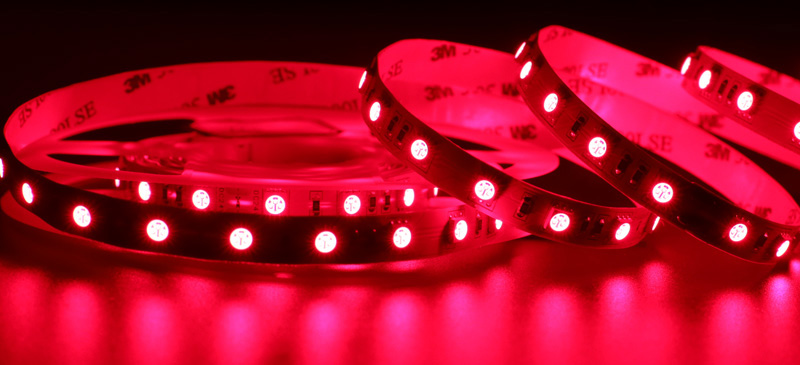 Deep Red Light 660nm LED Strip
Deep Red Light 660nm LED Strip660nm is visible light, referring to red light with a wavelength of 660 nanometers. When 660nm light is emitted from a light source, our eyes are able to see a distinct reddish glow. The wavelength range of red light is between 620nm and 750nm, with 630nm 640nm 650nm 660nm all showing red light.
LED lights can emit 660nm red color light, SMD2835, SMD3528, and SMD5050 can do red light. Using these low voltage DC 12V or 24V deep red 660nm led light strips for light therapy can promote cell regeneration and repair, anti-inflammation, improve blood circulation, reduce pain, and promote wound healing. LED 660nm red light therapy has a positive effect on both skin health and mental health. In plant growth lighting, red light around 660nm has a significant effect on photosynthesis, especially under certain 500nm blue light conditions, which can promote plant growth and flowering. Sometimes 660nm mixed with 3000K/3500K warm white light is also chosen to help vegetable growth.
The deep red 660 nm long wave red light has a high penetrating power. Compared to the invisible infrared 850 nanometers, 660 nanometer red light is lower in energy and has a milder effect on living organisms. The wavelength of 640nm-670nm deep red light is longer than 620nm-630nm normal red light, so 660nm red light is good for plant growth and medical treatments. 660nm deep red led strips provide uniform illumination coverage and are suitable for lighting applications that require uniform lumens over a large area.
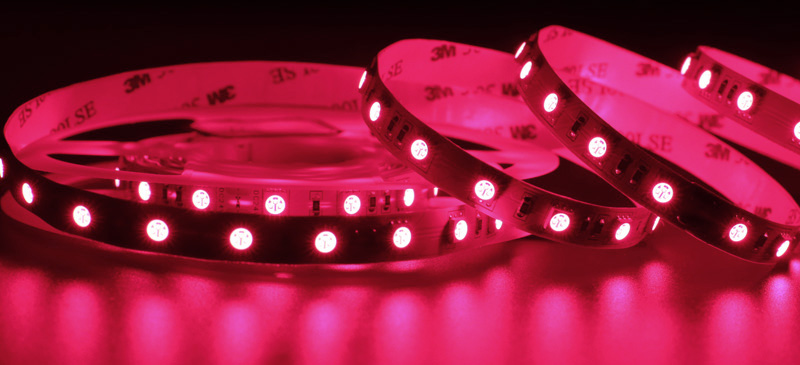 Far Red Light 730nm LED Strip
Far Red Light 730nm LED StripIn the visible light spectrum, the wavelength of red light ranges from about 620nm to 750nm. Compared to 660nm bright deep red light, 730nm far red light is closer to the boundary of infrared light. In 730nm strip with SMD 2835, 3528, 5050 as the 730nm LED light source, the 730 nm light shows a red color and is directly visible. Due to the human eye's low sensitivity to long wavelengths, the visible red illumination range of 730 nm red light is smaller compared to the common 620-630 nm red light, which is concentrated near the strip.
Red light at 730 nm wavelength can be absorbed by plants and plays an important role in plant growth. Far red 730nm led grow light penetrates deep into the plant canopy and effectively promotes the plant's shade avoidance response, allowing the plant to elongate its stems while regulating the flowering cycle. Supplementing plants with 730nm far-red light rays also enhance photosynthesis and increase plant biomass, which in turn enhances plant resilience and helps plants to grow better under various environmental conditions, especially beneficial for ornamental flowers.
We offer a wide range of protection levels and light densities of hyper red 730 nm led strips to suit different environments and needs of plant growth rooms. View our products today.
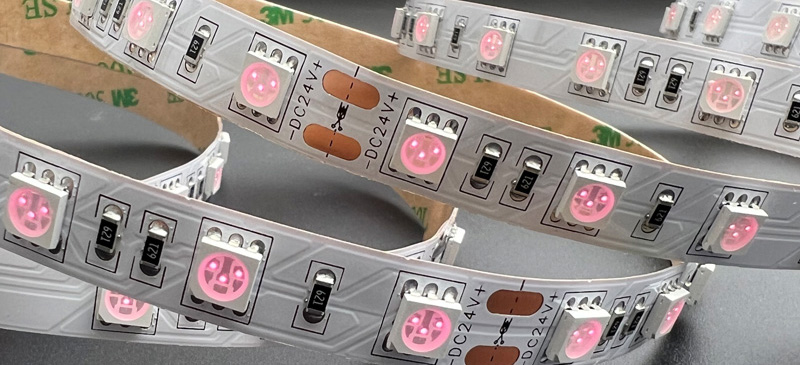 Near IR Light 810nm LED Strip
Near IR Light 810nm LED StripSuper Lighting LED offers multiple types of 810 nm LED strip for red light therapy. 810nm integrated with SMD 5050, 2835, 3528 LED diodes and you can see red light dots due to the 810nm IR LED wavelength contains visible 680-780 nm far red light spectrums. In fact 800nm 810nm 820nm 830nm wavelengths are all near IR light, they are invisible to the human eyes.
The 810nm wavelength has strong tissue penetration ability and can penetrate deep into the skin tissue and reach the target treatment area, often used in sauna applications and photobiomodulation therapy. Beneficial for improving depressive symptoms, enhancing muscle performance and post-exercise recovery, promoting lymphatic drainage, antibacterial and anti-inflammatory, and blood circulation.
Flexible 810 nm near infrared (NIR) LED light strips are highly adaptable in domestic and commercial medical, beauty and health lighting with their cuttable, waterproof design, selectable light densities, and long strip structure.
Guide to Know Near-Infrared Light Therapy
810nm LED Strip Light Spectrum Test PDF


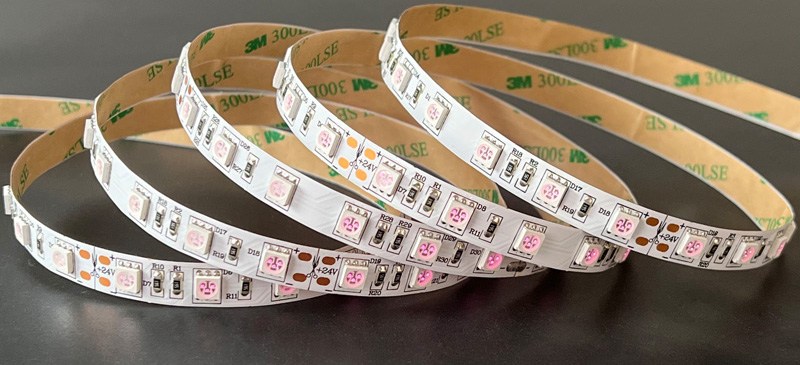 Near Infrared Light 850nm LED Strip
Near Infrared Light 850nm LED Strip850nm is a wavelength of light that lies in the near-infrared spectral range, and is invisible to the human eye. But in infrared 850nm IR led strip light, the 850nm LED appears to have a red burst, the SMD LED chip emits a visible red light dot as the 850nm led strip operates. The visibility of 850nm red light can help to confirm the operational status of the infrared led strip 850nm, and has a wide infrared illumination range for night photography over a wide area such as around house.
850 nm infrared light has significant applications in the field of phototherapy. 850nm red light therapy penetrates deep into the skin and is absorbed by the water, proteins and pigments in the tissues to generate heat energy. This heat energy stimulates circulation, increases cellular activity, and acts as an inhibitor of inflammation and pathological tissue.
Red Light Therapy 660nm And 850nm: 660nm belongs to visible light, the color is deep red. 850nm near-infrared wavelength is more powerful than 660nm red wavelength to penetrate the tissue and able to reach the deeper tissues of the body. Therefore, 660nm led strip is commonly used for surface skin problems and cosmetic issues, while 850nm infrared light is more suitable for deeper tissue treatments.
Infrared 850 nm IR LED Strip Light
Our NIR 850nm led strip lights have different types of LED beads arranged from low to high intensity, with low to high power and high efficiency, which can be bent, cut and extended according to your needs.
 Infrared Lights 940nm LED Strip
Infrared Lights 940nm LED Strip940 nm wavelength LED is located in the infrared light spectral range, invisible to the naked eye. 940nm invisible infrared technology is widely utilized in applications such as night vision devices, remote controls, security cameras, and other applications to provide clear night vision while maintaining surveillance invisibility. The 940 nanometer infrared light has a good transmission capacity in the atmosphere, which makes it suitable for long-distance transmission and telephoto shooting.
940nm vs 850nm infrared lights for night vision
Humans can't see infrared light 940nm but we can see a little pink light at 850nm infrared light. Both 940nm and 850nm IR light can be used in night vision systems. The difference is that 940nm infrared led light is completely invisible to the naked eye and almost no glow under cell phone cameras, therefore 940nm led strip is better suited for surveillance scenarios where concealment is required. (Some iPhone cameras don't see the IR led strip 940nm infrared light, some Android phones can see a little bit of a light pink spot in the 940nm infrared LED.)
Our 940nm infrared led light strips come in a variety of voltages, densities, wattages, waterproof ratings, easy cut to length to suit each application. Explore flexible infrared light bar here.
Wavelength Optimization Table: Matching Red & IR LEDs to Your Project Needs
660nm vs 730nm vs 810nm vs 850nm vs 940nm
The 660nm LED falls within the visible light spectrum (red region), appearing as a bright red color that is clearly visible to the naked eye. The 730nm LED is located at the edge of the visible red spectrum and is still perceived as a deep red hue.
The 810nm LED lies at the boundary between visible and near-infrared light—while some individuals may detect a faint red glow, it is generally considered invisible. Both 850nm and 940nm LEDs are purely near-infrared (NIR) and invisible to the human eye, though they can be detected by cameras or infrared sensors.
Visibility Ranking: 660nm > 730nm > 810nm > 850nm > 940nm (completely invisible).

For applications requiring visual feedback (e.g., treatment positioning or visual indicators), 660nm or 730nm LEDs are preferred. For scenarios demanding discretion (e.g., security or nighttime use), 850nm or 940nm wavelengths are more suitable.
SuperLightingLED's Tri-Wavelength IR LED Innovation in SMD5050
In addition to conventional single-wavelength LED strips for basic red and infrared lights applications, SuperLightingLED pioneers tri-wavelength integration within a single SMD5050 chip - combining 660nm (red), 660nm & 850nm (IR) / 450nm (blue), 660nm & 810nm (IR) for revolutionary phototherapy performance. This cutting-edge design offers:
✔️ Multi-Wavelength Synergy - Concurrent emission of therapeutic spectra for enhanced biological effects
✔️ Compact Design - Triple functionality in standard 5050 footprint (5.0×5.0mm)
✔️ Programmable Channels - Individual wavelength control via PWM dimming

Contact our engineers to develop customized OEM tri-wavelength infrared solutions for premium horticultural lighting systems and home sauna light therapy.
How to Choose Among Red & Infrared SMD LED Strip Types?
This Red & Infrared LED Strip Selection Guide compares SMD2835, 3528, and 5050 LEDs for red and infrared lighting applications, helping you select the best option based on illumination, power, size, and density.
Red & Infrared LED Light Source Comparison:
| LED Package | 2835 | 3528 | 5050 |
| Chip Structure | Single-core LED | Single-core LED | Triple-core LED |
| Available Wavelength | 660nm, 730nm, 810nm, 850nm, 940nm | 660nm, 730nm, 810nm, 850nm, 940nm | 660nm, 730nm, 810nm, 850nm, 940nm |
| Light Performance | Uniformity improves with reduced LED pitch | Uniformity improves with reduced LED pitch | Balancing LED density and brightness |
| Light Spread | Wider than 3528 (square light-emitting area) | Focused (circular light-emitting area) | Wide (circular light-emitting area) |
| Power Cons. | Low | Low | High |
| Luminance Density | 30, 60, 120, 240 LEDs/m (single row), 240 LEDs/m (double row) | 30, 60, 120, 240 LEDs/m (single row), 240 LEDs/m (double row) | 30, 60, 120 LEDs/m (single row), 120 LEDs/m (double row) |
| PCB Width | 8mm, 15mm | 8mm, 15mm | 10mm, 15mm |
| Waterproof Rating | IP20, IP65, IP67, IP68 | IP20, IP65, IP67, IP68 | IP20, IP65, IP67, IP68 |
Near-Infrared SMD LED Selection Essentials:
• Looking for value for money? → Choose 2835 (balanced performance).
• Looking for localized lighting? → Choose 3528 (more concentrated light).
• Looking for the strongest performance? → Choose 5050 (high power / infrared preferred).

SuperLightingLED Red & Infrared LED Strips - Customize Your Wavelength Solution
For customized near-infrared light solutions with other specific LED wavelengths, our engineering team is ready to assist you! Whether you need:
• Different wavelength bands (e.g., 780nm, 910nm, 970nm)
• Unique wavelength combinations (e.g., 810nm + 940nm designs)
• Tailored power/output for medical, industrial, or horticultural applications

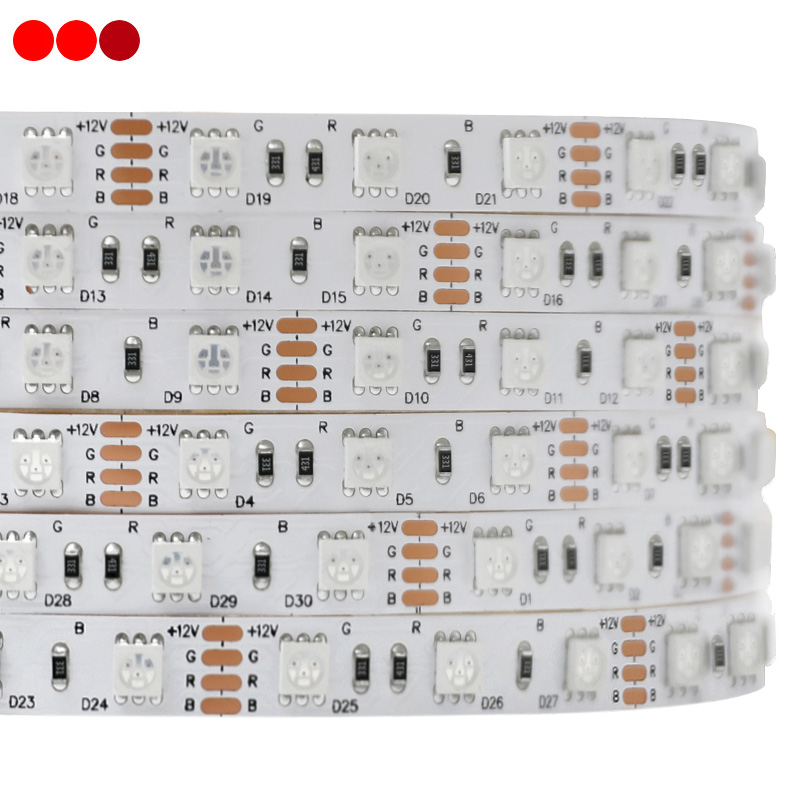
 (0)
(0)




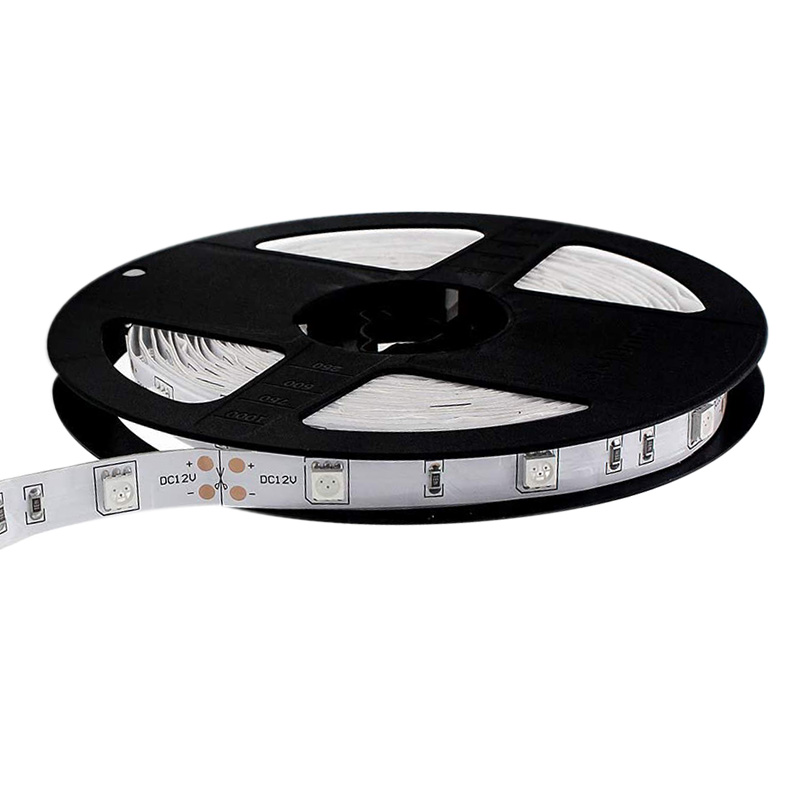
 (1)
(1)